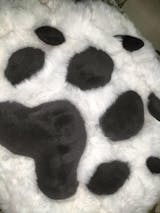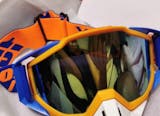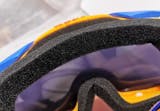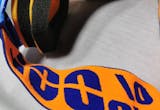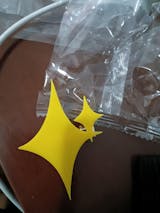When it comes to choosing the best material for your fursuit head, few factors are as important as weight. Whether you’re performing at conventions, dancing in competitions, or just suiting up for fun, a lightweight fursuit head can significantly improve comfort, mobility, and endurance. At MeowFursuits, we specialize in crafting custom fursuits that balance aesthetics, performance, and practicality. Today, we’re diving into a head-to-head comparison: fiberglass vs foam—which one wins for weight, durability, ventilation, and more?
Why Weight Matters in Fursuit Heads
The weight of a fursuit head plays a crucial role in the overall wearing experience, especially for performers who spend hours suiting up during conventions, shows, or high-energy dance routines. A large or heavy fursuit head can lead to problems like excessive heat, muscle strain in the neck, and overall physical exhaustion. These problems not only reduce comfort but also limit mobility and reduce the amount of time you can wear your suit effectively.
For performers, dancers, and anyone who needs to move actively while suited—particularly in warm or humid environments—a lightweight fursuit head is essential. A lighter headpiece means less pressure on the neck and shoulders, improving endurance and reducing the risk of injury. It also improves your field of vision and range of motion, making it easier to move naturally and express character more fluidly. Ultimately, a lighter head increases your overall enjoyment and confidence while suiting.
Before we dive into comparing foam and fiberglass materials, it’s important to understand what each one entails in the world of fursuit crafting:
- Foam Fursuit Head: Usually made with upholstery foam or EVA foam. Lightweight and soft.
- Fiberglass Fursuit Head: Made using fiberglass resin and cloth, molded and hardened for durability.
At MeowFursuits, we create custom builds using both foam and fiberglass depending on the performer’s specific needs, budget constraints, and personal style preferences. By understanding the characteristics of each material, you can make an informed decision about which fursuit head will best support your performance goals and comfort requirements.
Foam Fursuit Heads
What Is a Foam Fursuit Head?
A foam fursuit head is a popular choice among fursuit makers and performers due to its lightweight and flexible nature. Typically, these heads are crafted using materials like upholstery foam, EVA foam, or other similar closed-cell foams. The crafting process involves carefully carving, layering, and shaping the foam over a base—often a balaclava or helmet-style form—to create the desired facial structure and character features.
This method allows artisans to sculpt highly detailed and expressive heads that capture a wide range of personalities and styles. Because foam is soft and pliable, it offers a comfortable fit for extended wear, making it especially suitable for performers who require mobility and ventilation without sacrificing visual appeal.
Pros of Foam Heads
- Extremely lightweight: Ideal for dancing, long wear, and travel.
- Highly customizable: Easy to carve into detailed expressions and features.
- Affordable: Foam is cost-effective and widely available.
- Breathable: With proper ventilation design, foam allows for good airflow.
Despite their many advantages, foam fursuit heads do come with some inherent limitations. Over time, foam can compress or deform, especially if subjected to heavy use or improper storage. This may affect the head’s original shape and the crispness of its features.
Cons of Foam Heads
- Less durable: Foam can compress or lose shape over time.
- Moisture sensitivity: Foam may absorb sweat or humidity.
- Support limitations: Foam lacks the rigid support needed for certain designs or heavy additions (e.g., large ears or horns).
Another important consideration is that foam is sensitive to moisture. Prolonged exposure to sweat or humid conditions can cause the foam to absorb moisture, potentially leading to unpleasant odors or material degradation if not properly cared for.
Additionally, foam lacks the structural rigidity found in other materials like fiberglass. This means it may struggle to support heavy or large design elements, such as oversized ears, horns, or animatronic components, without additional reinforcement.
Despite these challenges, the foam fursuit head remains a top choice for many due to its unbeatable combination of comfort, customization potential, and lightweight performance.
Fiberglass Fursuit Heads
What Is a Fiberglass Fursuit Head?
A fiberglass fursuit head is made through a detailed process where resin is shaped in a mold and strengthened with fiberglass fabric layers. This construction method, commonly used in professional mascot creation and prop fabrication, results in a rigid and durable headpiece. Unlike foam, which is carved and shaped manually, fiberglass heads are typically formed in molds, allowing for precise, repeatable shapes with a smooth finish. This technique is ideal for performers or creators seeking a robust and long-lasting fursuit head that can withstand rigorous use.
Pros of Fiberglass Heads
- Durable: Resistant to impact and long-lasting even with heavy use.
- Structural strength: Supports complex features like articulated jaws or animatronics.
- Smooth base: Allows for a clean surface under fur or paint.
- Moisture-resistant: Doesn’t absorb sweat or humidity.
Cons of Fiberglass Heads
- Heavier than foam: Although relatively light, still heavier than foam.
- Less forgiving fit: A fixed shape limits custom comfort unless precisely measured.
- Higher cost: Materials and labor for fiberglass heads tend to be pricier.
Fiberglass fursuit heads stand out for their durability, structural strength, and professional finish, making them an excellent choice for performers seeking a long-lasting, sturdy headpiece that can accommodate advanced features like animatronics. Their resistance to moisture and wear ensures reliable performance in demanding environments.
However, the added weight, fixed fit, and higher cost mean fiberglass heads may not be the best option for everyone—especially those prioritizing lightweight comfort and flexibility. In the end, selecting a fiberglass fursuit head comes down to your individual goals, how you plan to use it, and what you're comfortable spending. At MeowFursuits, we are happy to help guide you toward the best material choice that balances durability with comfort for your unique fursuit journey.
Foam vs Fiberglass Head: Feature-by-Feature Comparison
When choosing the perfect fursuit head, understanding how different materials perform across key features is essential. Both foam and fiberglass have unique strengths and trade-offs that affect comfort, durability, customization, and overall wearability. In this section, we’ll break down the most important aspects side-by-side to help you decide which material best fits your needs and lifestyle. Let’s break it down by key features important to fursuiters:
1. Weight and Wearability
When it comes to suiting for long periods, the weight of your fursuit head can make a significant difference in comfort and endurance. Performers who move actively or participate in extended events often prioritize a headpiece that won’t tire their neck or limit mobility. Let’s see how foam and fiberglass compare in this crucial area.
- Foam is undeniably the champion when it comes to creating a lightweight fursuit head. Some weigh less than 1 pound, allowing extended wear with minimal fatigue.
- Fiberglass, while relatively lightweight compared to metal or wood, is still denser. Users may feel fatigue sooner in high-energy activities.
Winner: Foam
2. Durability and Longevity
Another important factor is how well your fursuit head holds up over time. Frequent use, travel, and storage conditions can take a toll on materials. Evaluating the durability and lifespan of foam versus fiberglass heads helps you understand which investment will serve you best in the long run.
- Foam heads are more prone to wear and tear. Over time, compression, deformation, or tearing may occur, especially if handled roughly.
- Fiberglass heads can last for many years with proper care. They withstand impact, pressure, and are less likely to deform.
Winner: Fiberglass
3. Comfort and Fit
A fursuit head should feel like an extension of yourself. That means comfort and fit are vital, especially for wearers who spend hours inside their suits. Foam and fiberglass heads approach fit differently, affecting how snug or forgiving the head feels during wear.
- Foam conforms easily to various head shapes and sizes, and is typically built over a balaclava to provide a snug and comfortable fit.
- Fiberglass requires precision measurements and padding. Poor fit can lead to pressure points.
Winner: Foam
4. Customization and Design
Every character has a unique look, and your fursuit head should capture that personality. The ease and flexibility of customization often guide artists and buyers when choosing between foam and fiberglass. From soft, expressive shapes to intricate mechanical parts, the materials offer different creative possibilities.
- Foam heads are easier to carve, allowing artists to experiment with exaggerated expressions or soft, kemono-style features.
- Fiberglass heads offer a rigid base for mechanical features but require mold-making and technical skills.
Winner: Depends on design goals
5. Ventilation and Breathability
Keeping cool and comfortable inside a fursuit is a top priority for many wearers, especially during warm weather or high-energy activities. The ventilation and breathability of the head material impact your overall suiting experience and stamina.
- Foam heads, especially open-cell foam, can provide decent airflow when designed properly.
- Fiberglass heads require built-in vents or fans for similar comfort.
Winner: Foam
Best Use Cases for Each Material
Choosing the right material for your fursuit head depends largely on how and where you plan to use it. Both foam and fiberglass excel in different scenarios, offering distinct advantages tailored to various performance styles, budgets, and design preferences. In this section, we’ll explore the ideal situations for each material to help you make the most informed choice for your fursuit needs.
Use Case: Performers and Dancers
If you’re dancing at conventions, parades, or stage shows, a lightweight fursuit head is essential. Foam offers the agility and comfort needed for movement-intensive routines. At MeowFursuits, many of our performance clients choose foam bases paired with cooling features like mesh mouths and fan systems.
That said, if you’re incorporating LED eyes, moving parts, or jaw articulation, a fiberglass fursuit head might be necessary despite the weight. Fiberglass offers the support and protection required for advanced performance builds.
Use Case: Outdoor and Hot Weather Suiting
Heat can be a major issue in fursuiting. For suiting in summer weather or warm regions, breathability and weight are vital. Foam heads remain the preferred choice, with strategic vent placement and lightweight design keeping the wearer cooler.
At MeowFursuits, we’ve developed summer-optimized foam heads that feature built-in cooling channels and removable inner liners.
Use Case: Travel and Storage
- Foam heads are easier to pack and carry, especially for air travel. Some models can compress slightly or fit into custom carriers.
- Fiberglass heads need more protection during transit. They can crack if mishandled.
Winner: Foam for portability.
Pricing Comparison
Budget is often a key factor when deciding between a foam or fiberglass fursuit head. Understanding the typical costs involved—including materials, labor, and potential repairs—can help you plan your investment wisely. In this section, we’ll compare the expenses associated with each material to give you a clearer picture of what to expect when budgeting for your custom fursuit head.
| Feature | Foam Fursuit Head | Fiberglass Fursuit Head |
| Base Price | $300–$800 | $500–$1500+ |
| Shipping Cost | Lower (lightweight) | Higher (heavier & fragile) |
| Repair Cost | Low | High (requires specific tools) |
| Customization | Easy and affordable | Expensive and complex |
If you’re a beginner or on a budget, foam is the more economical choice. Fiberglass, while premium, is an investment best suited for those with professional or intensive use cases.
At MeowFursuits, we offer foam-based heads starting at lower price points with optional upgrades like fans, custom eyes, and magnetic tongues. Fiberglass builds are custom-quoted based on complexity.
What MeowFursuits Recommends
At MeowFursuits, we understand that every wearer has different goals, preferences, and performance needs—so there’s no one-size-fits-all answer when it comes to choosing between foam and fiberglass fursuit heads. The right material depends on how you intend to use your suit, how often you’ll wear it, and what kind of comfort or visual impact you’re aiming for. That’s why we work closely with our clients to match them with the most suitable option based on their individual requirements.
To help guide your decision, here’s a quick breakdown of which material is best suited for different use cases:
Choose a foam fursuit head if you:
- Prioritize lightweight comfort
- Plan to perform or dance frequently
- Are new to fursuiting and want an affordable option
- Need easier travel and packing
Choose a fiberglass fursuit head if you:
- Require durability and strength
- Want complex features like moving jaws or electronics
- Are commissioning a long-term, professional-grade suit
- Don’t mind the extra weight or higher cost
Final Thoughts
When comfort, breathability, and agility matter most—like for dancers and summer events—foam is the go-to for a lightweight fursuit head. But when strength, longevity, or mechanical features are a must, fiberglass has its place.
At MeowFursuits, we craft both foam and fiberglass fursuit heads to suit different needs, offering consultation to help you pick the right base. Whether you’re prioritizing heat performance, travel ease, or high-tech customization, our team is here to make your vision wearable.
Want to see real-world comparisons or feel the difference yourself? Contact MeowFursuits to book a material sample kit or design consultation today.










